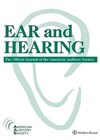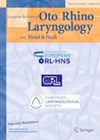
Journal Reviews
Are individuals with vestibular vertigo accessing healthcare more frequently?
Vestibular vertigo is estimated to have an adult lifetime prevalence of 7.4%. Vestibular dysfunction has been linked to physical, cognitive, and psychiatric impairments. There is, therefore, a large economic burden and healthcare usage. Patients with vestibular vertigo are more likely...
Are we now safe at work?
Fifty years is a long time, yet the years pass in a blink of an eye. Where are we in comparison to where we were then, in terms of the occupational protection from noise exposure and ototoxicity, other than being...
Lost and sound: exploring hyperbaric oxygen therapy for refractory SSNHL
Can hyperbaric oxygen therapy (HBOT) offer a breakthrough for patients with refractory sudden sensorineural hearing loss (SSNHL)? SSNHL is defined as acute hearing loss of ≥30 decibels in three consecutive frequencies within three days. Typically, it’s treated with two weeks...
Covid-19 and vestibular symptoms review
Since the coronavirus pandemic, there have been several studies looking into alterations within the auditory system but few in the vestibular system associated with Covid-19. This review delves into the specific evidence. It is challenging to elucidate the link between...
Effect of peripheral and central vestibular dysfunction on sense of direction
Sense of direction (SOD) is the ability to orientate ourselves and to determine the locus of objects in our environment. The vestibular system plays a key role in spatial orientation by encoding angular acceleration in the absence of visual cues...
Vestibular function preservation after minimally invasive paediatric cochlear implantation
This retrospective study analysed results in 24 paediatric patients with low-frequency residual hearing before and after minimally invasive cochlear implantation. The authors define minimally invasive cochlear implantation as a round window insertion of flexible Nucleus CI422, Nucleus CI522, MedEl Flex...
Recovery of vestibular function after vestibular neuritis
It is well known that recovery from vestibular neuritis (VN) is not solely mediated through central vestibular compensation, but also at the peripheral level. The authors conducted a prospective study to track the dynamic changes in recovery from vestibular neuritis...
Dizziness questionnaire and telemedicine during Covid pandemic
During the initial phases of the Covid-19 pandemic in 2020, delivery of ENT care adapted significantly. Kaleva et al present their findings of telephone balance consultations during the pandemic with a randomised prospective study utilising a dizziness questionnaire in West...
The decision-making process by parents of children with residual hearing who receive cochlear implants
It can be a difficult decision for parents whose children have residual hearing whether or not to undergo cochlear implantation. Their children may seem to be hearing with their hearing aids, and even in some cases can hear without aids....
Otolith malfunction can be a cause of orthostatic dizziness
This prospective study evaluated otolith function with vestibular evoked myogenic potentials (VEMPs) and subjective visual vertical / horizontal (SVH) tests in 50 adults with normal hearing between the ages of 18 and 50 years. The authors hypothesised that there are...
Booklet-based supervised vs. non-supervised vestibular rehabilitation
There are conflicting results in the literature about home-based vestibular rehabilitation training (VRT) as opposed to physiotherapist-led training. A randomised controlled trial was designed to interrogate this further. The primary aim was to assess “the effects of a booklet-based exercise...
Can tympanometry be used to diagnose Ménière’s disease?
The authors proposed multifrequency tympanometry (MFT) as an in-office test which may be able to diagnose Ménière’s disease (MD) that is quicker and more cost-effective than other methods. MFT measures the acoustic admittance of the middle ear and external ear...














